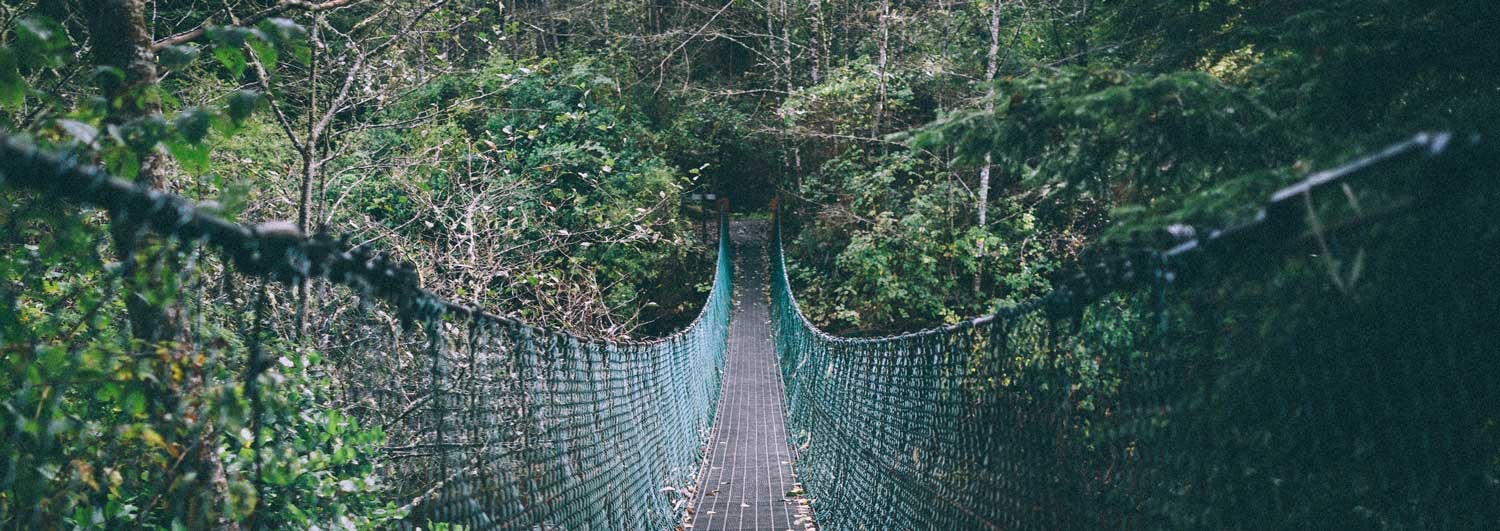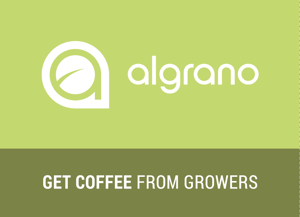Arabica futures have risen since November 2023, hitting lockdown levels and leaving buyers at a standstill. But key origins like Brazil and Peru are in season and waiting might be a bad call. Let’s explore what’s happening in the market and the solutions at hand to help you secure the roastery’s supply.
A buyer's dilemma
Timing coffee purchases can make or break a roastery. That’s tricky when the C market is high and volatile. Right now, news of record prices is everywhere. Last week, Arabica futures reached a two-year high, Robusta hit a 16-year high, and June’s ICO Composite Indicator Price (I-CIP) climbed to a 13-year high. Arabica prices swayed 15 cents in one day. So, should you wait to buy coffee or just bite the bullet?
The good news is that forward buying gives you flexibility and time to respond to price fluctuations and find solutions before it’s too late. Algrano helps you find a strategy that works for your roastery according to your needs, volume, and approach to pricing.
Will the market drop?
.png?width=1536&height=768&name=Full%20Width%20(38).png)
C price flipchart showing monthly prices since the 1970s (Source: Barchart)
No one really knows what the market will do over the next few days and weeks. It’s not the first time this has happened either. Prices shot up in 2022, 2014, 2011, 2009… There’s an industry consensus—shared by large roasters, traders, and producers — that the coffee market will remain “nervous” for a while, reacting fast to harvest and weather news. This year, there’s no guarantee that prices will drop fast or by much.
For roasters who are used to buying at fixed prices, this can feel overwhelming. The volume lots from key origins like Brazil and Peru, priced close to the C market, fluctuate every day, while micro-lots aren’t as affected. So let's explore some ideas that can mitigate a price increase, from quality adjustments to differential contracts and put options.
The solutions listed here are not exhaustive. Our team is happy to look into solutions case by case to help you find the best strategy for your roastery. We’ll also cover the reasons behind the price increase and the risks of waiting to make contract decisions.
All eyes on Vietnam
A Robusta shortage in Vietnam and Indonesia is a major driver of high prices. Vietnam, the largest Robusta producer, is going through its worst drought in over a decade. The spike we saw last Tuesday in the C market was due to an announcement that Vietnam’s June exports dropped by 11.5%, the lowest in 13 years. This week, when prices dropped a little, it was due to news of rainfall in Brazil.
Vietnam’s next crop starts in October or November, and the industry expects another bad year. Although rainfall has returned, the prolonged drought affected flowering. Roberta Armentano of Itah Comercial Exportadora, an exporting company in Brazil, explains that if the drought damages only the superficial soil layer, trees might recover next year. But if the roots are affected, the trees may need to be removed.
Projections for Vietnam’s next coffee crop are already in the news, but we’ll only know the full extent of the drought's impact when the harvest starts. Traders speculate the market won’t change much before November, especially with the Brazilian season well underway.
But why does this all matter?
Vietnam’s harvest is one of the key fundamentals that can shift the market up or down. It can affect supply in a significant way. So if you’re waiting for prices to drop, you might be waiting until November. Giuseppe Lavazza, chair of the Lavazza Group, believes it’s not happening at all in 2024.
Can I afford to wait?
If your roastery has enough coffee contracted to last until early 2025, you might not need to buy immediately. In theory, you can afford to wait until November. You should still start taking to producers now. Think about it. You’re not the only one waiting. When the market drops, everyone will rush to buy. And guess what? That will put pressure on the market again.
There’s more. If many buyers contract at the same time, mills will get busier and there might be shipping delays. Look at what’s already happening at the port of Vitória, in Brazil, with the high demand for Conilon. When producers go through periods of high prices like this, they capitalise. Then, they’re the ones who can afford to wait. They might hold stock to sell at a better price later. Can you blame them?
.png?width=1536&height=768&name=Full%20Width%20(39).png)
Algrano can help you find the best solution for your roastery (Photo: Algrano)
The risk of waiting
Even if you want to wait, be aware of the risks. Relying on spot coffee is a gamble. Prices might not go down, making the spot market expensive too. Remember the scramble for spot coffee during the pandemic? Plus, if you change coffee you’ll have to re-profile it, alter packaging, and risk a bad consumer reaction. You could end up with more problems than you have now.
Also, consider that most shipments from Ethiopia are delayed, creating a temporary shortage in the spot market from an important origin. Traders who buy certified coffee are already reacting by contracting more from Peru, and producers there are selling out.
Taking action now
If you need new crop coffee before the year ends, contract soon. You can’t afford to wait if your roastery will run out of stock this side of Christmas. With the market where it is, it's clear that you’ll need to pay more for your coffee in 2024 than last year.
Algrano can help you find a sourcing solution that reduces your risk, based on what you decide to do. It's worth remembering you’re not the only roaster facing these considerations. This affects the whole industry, and we’ll likely see price increases passed on to wholesale customers and consumers too.
Leverage your relationships with producers
When you forward buy through Algrano, you can communicate directly with producers. This opens up different ways to find win-win solutions.
For example, if you source coffee still at origin and not yet re-milled, producers can offer different qualities at more affordable prices. You can order samples close to your usual cup profile with a smaller screen size or a higher defect count. For example, instead of getting Brazil screen 17/18, consider a 16-up or a peaberry with the same cup profile.
.png?width=1536&height=768&name=Full%20Width%20(40).png)
Producers can help you find a suitable quality at a lower price (Photo: Sancoffee)
This is useful for roasters selling ground coffee, in capsules, for bean-to-cup machines, or vending machines. If you source the same quality for whole bean and coffee shops as you do for supermarkets or automatic machines, you can find a different coffee that fits your customers' needs at a lower price point.
Roberta Armentano notes that, during high-price periods, large roasteries often adjust their blends. “Roasters that use Robusta might buy Arabica peaberry because it’s cheaper and cups well. Exporters consider it the ugly duckling because it takes time to accumulate enough to fill a container, so we want to sell it quickly.”
Another option is shipping your beans in Alpha bags, which store 1,000kg of coffee, instead of 60 kg jute sacks. You will need equipment to bring the bags into your warehouse but it’s still cheaper.
Starting this kind of conversation with producers could be valuable for you both.
Contract now but keep the price open
While Algrano advocates for fixed prices, we understand that some roasters and producers work with differentials. Instead of fixing a final price for the coffee, you can contract based on a differential—a premium or a discount against the c-market price, with the premium depending on the origin and quality —and fix it when the market is more in your favour.
When you contract like this, the producer will hedge their sale to protect themselves against price fluctuations. You'll need to fix the price when (or before) the coffee is shipped because that’s when the producer is paid.
Assuming you need coffee in 2024, this buys you some time to explore market drops from one day to the next. Communicate your price target to your account manager and the producer. You can then choose the best time to fix it.
Will it be a lot cheaper? Maybe. Maybe not. What we do know is that you get more flexibility to fix your price. That’s always the case with open-price purchases.
Fix the price but get a payoff if the market drops
Another option is buying a protective put. It’s like insurance against a price drop for buyers who want to protect themselves against a drop in the C price. It involves buying a put option, a contract that gives you the right (but not the obligation) to sell an asset at a pre-defined price.
For example, if your target price is 230 cents per pound and the market is at 250, you buy the coffee at 250 and Algrano buys a put option on your behalf. Let’s say you believe the market will drop below 240 cents per pound, so you chose that as your strike price. If the C goes to 210, you sell your put. Algrano pays you the price difference (30 cents) minus the cost of the option.
In the end, you’ll pay more than you wanted for the physical coffee but will recover some of the money on the financial transaction, putting you closer to your initial target price range.
Put options are great when they work well. If prices go up you can’t sell the option but you pay the price fixed at the time of contracting. If the market stays above your strike price, you don’t make any money back-and you have to pay the cost of the put. So just as with insurance, there is no guaranteed payout, but you do get something if things move in the wrong direction. This strategy is suitable for full containers.
Final thoughts
Whatever you decide, start talking to your account manager and the producer you want to buy from now.
Explain how you roast and blend their coffee and describe your target customer. This helps producers suggest other qualities that might suit you. Showing commitment also means the producer is more likely to hold coffee if you wait.
While Algrano won’t make price predictions, we’re happy to share all the indicators we monitor, such as the Forward Curve and market news, to help you make the best decision. Our team can also assist you in having the necessary conversations with producers to strengthen your relationship and secure the coffees you need.
After reading all this, you might wonder if there’s a way to avoid volatility and have a stable price year after year. The answer is yes, but it only works when the price is decoupled from the commodity market. If you paid above US$6,00/kg FOB for a Brazil consistently over the past years, the producer selling to you won’t raise prices just because the market went up.
Useful links
- Forward Curve: https://www.tradingview.com/symbols/ICEUS-KC1!/forward-curve/
- Crucial Coffee Exports From Vietnam to Be Tight Through Year-End: https://www.bloomberg.com/news/articles/2024-07-12/crucial-coffee-exports-from-vietnam-to-be-tight-through-year-end
- Why global growth is tepid, but commodity prices remain high: https://blogs.worldbank.org/en/voices/why-global-growth-is-tepid-but-commodity-prices-remain-high
- Extreme Weather Is Shaking Up Global Food Markets Again: https://www.bloomberg.com/news/newsletters/2024-07-12/global-food-roundup-extreme-weather-hits-food-supplies
- Pricey Coffee Is Here to Stay as Hoarding, Heat Hit Vietnam Supply: https://www.bloomberg.com/news/articles/2024-04-25/pricey-coffee-here-to-stay-as-hoarding-heat-hit-vietnam-supply
Learn more about the market with Algrano
Our next direct sourcing workshop will bring more insights about the coffee market and a special selection of coffees from Brazil and Peru, showcasing different qualities and price points.





Let Us Know What You Thought about this Post.
Put your Comment Below.